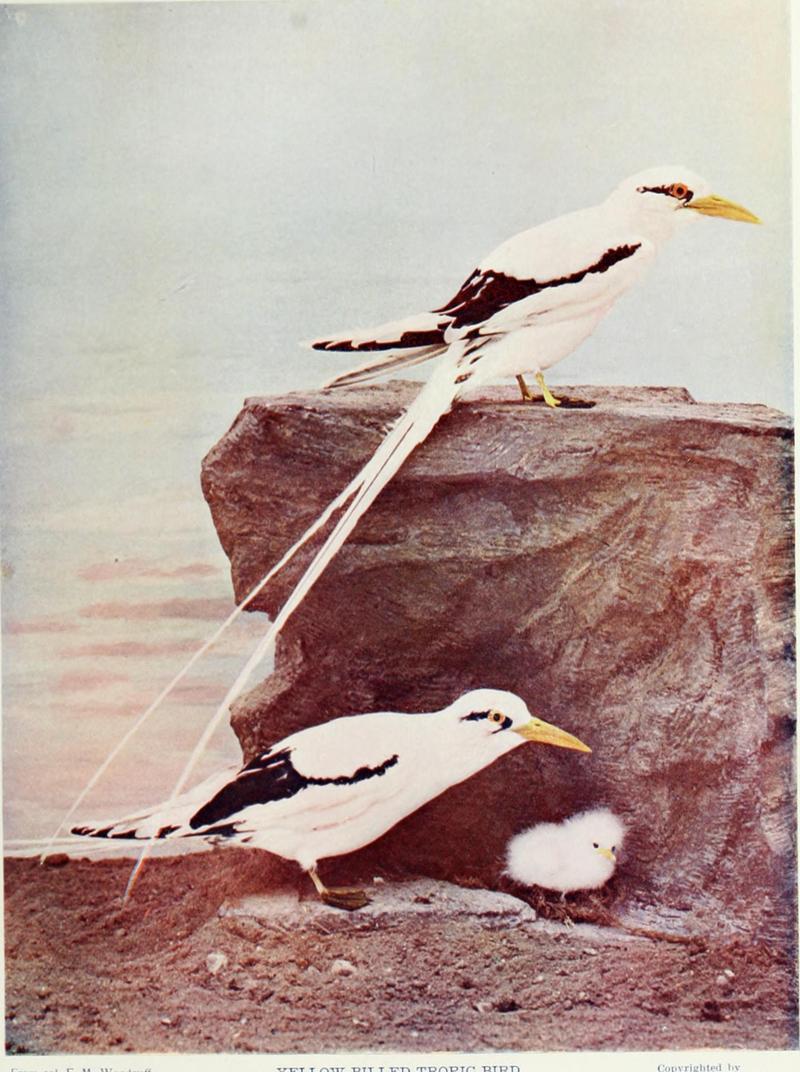|
| Query: bird | Result: 2672nd of 32675 | |
white-tailed tropicbird (Phaethon lepturus)
| Subject: | white-tailed tropicbird (Phaethon lepturus)
| | Poster: | Wiki Photos (---@---.---)
| |

| Resolution: 1776x2380
File Size: 406406 Bytes
Upload Date: 2017:04:04 01:24:35
|
Year: 1914 (1910s)
Authors: Banta, Nathaniel Moore, 1867- Schneider, Albert, 1863- Higley, William Kerr, 1860-1908 Abbott, Gerard Alan
Subjects: Natural history
Source: https://commons.wikimedia.org/wiki/File:Nature_neighbors,_embracing_birds,_plants,_animals,_minerals,_in_natural_colors_by_color_photography,_containing_articles_by_Gerald_Alan_Abbott,_Dr._Albert_Schneider,_William_Kerr_Higley...and_other_(14562865968).jpg
The white-tailed tropicbird (Phaethon lepturus) is a tropicbird, smallest of three closely related seabirds of the tropical oceans and smallest member of the order Phaethontiformes. It occurs in the tropical Atlantic, western Pacific and Indian Oceans. It also breeds on some Caribbean islands, and a few pairs have started nesting recently on Little Tobago.
|
Comments |
|---|
| | Guest |
|
Scientific Name: Phaethon lepturus Daudin, 1802
Common Names: White-tailed Tropicbird, Yellow-billed Tropicbird
French: Phaéton à bec jaune; German: Weißchwanz-Tropikvogel; Spanish: Rabijunco menor, Rabijunco cola blanca
Taxonomy: Phaëton [sic] lepturus Daudin, 1802, Mauritius. |
^o^
Animal Pictures Archive for smart phones
^o^
|
|
|